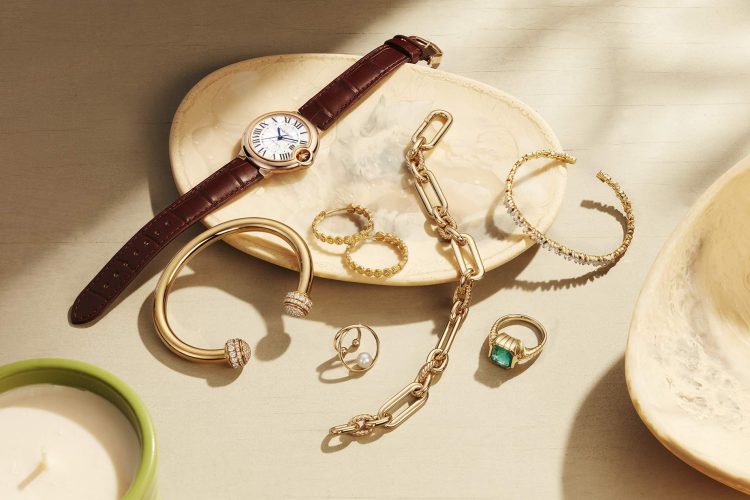Analyzing Current Price Trends in Gold Jewelry
Gold jewelry has long been celebrated for its combination of aesthetic beauty and intrinsic value. As we move into 2025, the market for gold jewelry remains dynamic, shaped by both traditional factors and emerging trends. Investors eyeing gold jewelry must understand how price patterns are evolving to make well-informed purchasing decisions.
Recent years have seen a steady rise in gold jewelry prices, driven by the increasing spot price of gold and growing consumer interest in luxury items with tangible value. In 2024, global gold prices reached near-record highs, fueled by economic uncertainties, persistent inflation, and geopolitical instability. These factors have a direct and indirect effect on jewelry prices. When the spot price of gold rises, jewelers must adjust their prices accordingly, as raw material costs significantly influence the final retail price.
Moreover, the post-pandemic era has ushered in a revival of demand for fine jewelry, with consumers viewing high-end pieces not just as adornments but as investment-grade assets. In particular, limited-edition collections, vintage jewelry, and pieces from renowned houses like Cartier, Bulgari, and Van Cleef & Arpels have seen appreciation rates rivaling those of traditional gold bullion. This growing investor interest has added upward pressure on prices, particularly for pieces that boast exceptional craftsmanship or historic significance.
Furthermore, the cultural significance of gold jewelry remains a crucial factor in price dynamics. In countries like India and China, gold jewelry plays a prominent role in festivals, weddings, and gifting traditions. Rising affluence among the middle classes in these regions continues to support steady demand, counterbalancing market slowdowns elsewhere and providing a consistent foundation for price resilience in 2025.
Key Factors Influencing Gold Jewelry Pricing
Several key components contribute to the pricing of gold jewelry, and understanding these can help investors make more strategic acquisitions.
First and foremost is the gold spot price, which is the baseline cost of the raw material. Gold jewelry prices typically reflect the spot price plus a markup to account for craftsmanship, design, brand prestige, and retail overhead. In periods when the gold spot price is volatile, jewelry prices can fluctuate more sharply, offering windows of opportunity for astute investors.
Craftsmanship is another major factor. High-end, hand-crafted jewelry pieces often command a significant premium over mass-produced items. Master jewelers employ intricate techniques, from hand-engraving to gemstone setting, which can greatly enhance the value of a piece beyond its gold content. Additionally, limited-edition designs or those involving collaborations with famous artists or fashion designers can further elevate a piece’s market value.
Demand trends also play a crucial role. In 2025, demand for sustainable and ethically sourced gold jewelry is stronger than ever. Consumers, particularly Millennials and Gen Z buyers, are showing a marked preference for brands that emphasize transparency in sourcing and production practices. This shift is making ethically produced pieces more desirable—and sometimes more expensive—than their traditionally sourced counterparts.
Brand influence cannot be underestimated. Jewelry from well-established luxury brands tends to appreciate better over time, offering both aesthetic pleasure and investment security. For instance, a classic Cartier Love bracelet or a Van Cleef & Arpels Alhambra necklace holds its value exceptionally well, often outperforming generic gold jewelry of similar weight.
Another factor impacting gold jewelry prices is design innovation. As consumer tastes evolve, pieces that reflect contemporary styles or groundbreaking craftsmanship tend to command higher prices. Jewelry houses that stay ahead of trends—like integrating technology, modular designs, or customizable features—can create pieces that attract modern buyers willing to pay a premium.

Expert Advice on Timing Your Jewelry Investments for Maximum Return
Timing is critical when it comes to investing in gold jewelry. Experts suggest that potential investors monitor several indicators before making a purchase.
One of the most effective strategies is to watch the gold spot price closely. Buying jewelry when the gold price is relatively low can significantly enhance investment returns over time. Historically, gold prices tend to surge during periods of economic instability, so proactive purchasing during calmer financial periods can yield better deals.
Another expert tip is to pay attention to seasonal trends. Jewelry retailers often introduce sales or special promotions during key shopping seasons, such as after Valentine’s Day, during mid-year sales, or around Black Friday. Smart investors can leverage these periods to acquire valuable pieces at a discounted rate, boosting their potential returns.
Investors are also advised to focus on timeless designs and iconic collections. Classic pieces tend to retain or even increase their value better than trendy or overly stylized designs that may fall out of fashion. Jewelry from world-renowned brands with limited availability provides a strong hedge against market volatility.
Diversification within the jewelry portfolio is another strategy experts recommend. Instead of concentrating investments in a single type of jewelry, such as only bracelets or necklaces, spreading acquisitions across different categories—earrings, rings, brooches—can offer greater resilience against shifting market tastes and conditions. Similarly, combining modern pieces with antique or vintage finds can provide a balanced exposure to both contemporary and historical markets.
Ensuring authenticity and proper documentation is essential. Investors should seek certification for gold purity and brand authenticity to preserve and enhance resale value. Pieces accompanied by original receipts, certificates of authenticity, and original packaging typically fetch higher prices when resold.
Finally, holding periods are crucial. Gold jewelry investment should be approached with a long-term mindset. While short-term market movements might tempt quick sales, the greatest returns are often realized by those who can hold their assets through multiple market cycles, allowing intrinsic and extrinsic values to compound.
Conclusion
As 2025 unfolds, gold jewelry remains a compelling investment opportunity, blending the timeless appeal of precious metals with the artistry of fine craftsmanship. By understanding current price trends, recognizing the key factors influencing jewelry pricing, and strategically timing their purchases, investors can maximize returns while enjoying the beauty and prestige that gold jewelry uniquely offers. With thoughtful acquisition strategies and a long-term perspective, gold jewelry can serve as both a portfolio diversifier and a lasting symbol of wealth and taste.
































